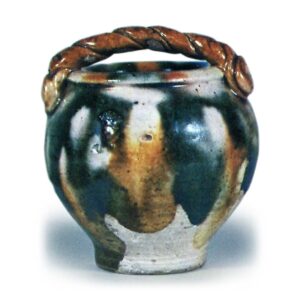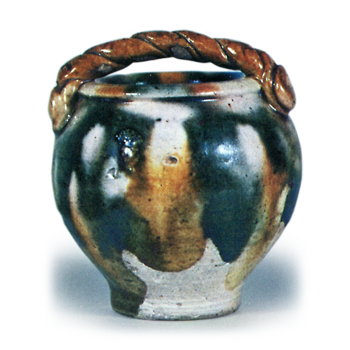
A soft three-color glaze produced in China during the Tang dynasty. The name is derived from the three colors of lead glaze (green, white, and brown), but the term “Tang sansai” also includes wares in which cobalt blue was sometimes added to produce four colors, and wares in which green and white or blue and white were used to produce two colors. This technique is an evolution of the green and brown glaze techniques that have been used since the Han Dynasty. The clay from Chang’an (Xi’an) and Luoyang, the capital of the Tang Dynasty, was slightly reddish, while the clay from Luoyang was white, and after white glaze was applied to them, they were fired. Vessels such as jars, bottles, vessels, bowls, pots and pans, and clay figurines of figures and animals are produced. The shapes of the vessels reflect the period and are full of Western designs such as dragon-ear jars and phoenix-head water jars, while pasted floral and embossed designs taken from Western metalware are also frequently used. Three-color glazes were often applied in terraced patterns, and in some cases, such as within a vase, stamped designs were often applied in different colors. White dotted patterns may have been created by a technique known as “nuki”. Tang Sansai was produced only during the Sheng Tang period, and the trend continued with Liao Sansai, Nara Sansai, and Persian Sansai. As a rule, Tang-style three-color wares were used for burial purposes and were not used in daily life.



